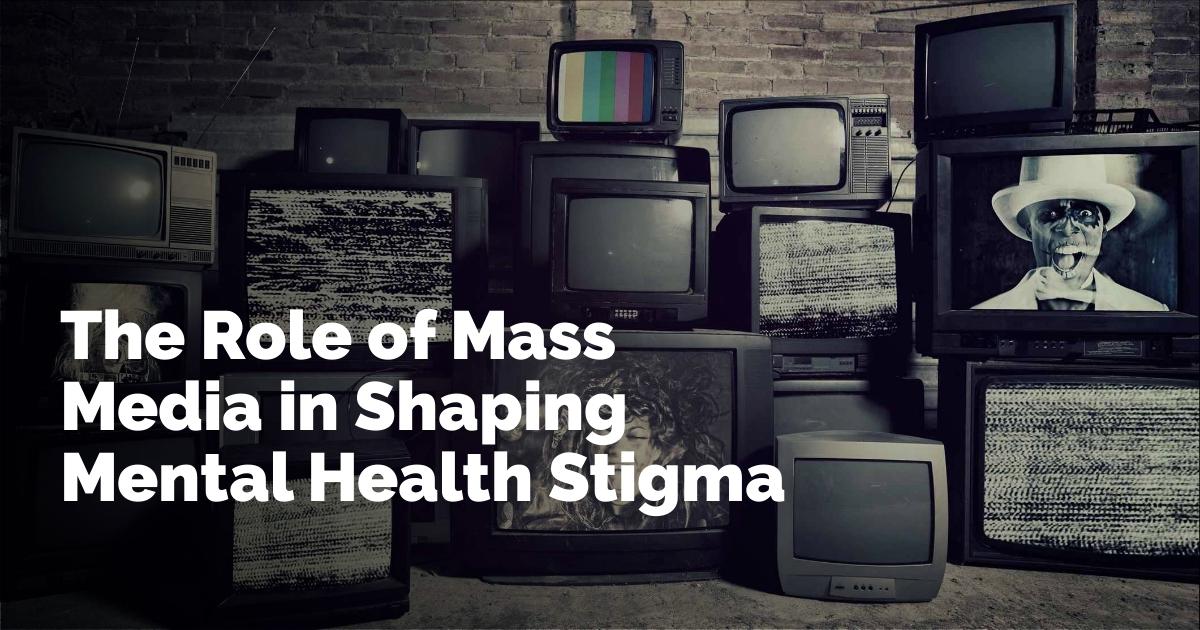Understanding Media's Role in Mental Health Stigma
The portrayal of mental health in mass media has long been a subject of extensive debate, often criticized for perpetuating stereotypes and stigmatizing attitudes toward individuals with mental illness. Instances of random violence often prompt media narratives describing the perpetrator as "crazy," a term that unfairly tarnishes those affected by mental illness. In reality, individuals with mental illnesses are more prone to be victims rather than perpetrators of violence. This simplification of criminal behavior into mental illness does a grave disservice to those who live with these conditions.
The media serves as a lens through which we understand different social groups. While it can be an avenue for education about diversity, too often, it becomes a root source of misinformation, affecting both how society at large sees mental illness and how that impacts those who experience it firsthand.
What is Stigmatization?
Stigma manifests as negative beliefs, attitudes, and actions geared toward individuals based on certain traits or attributes, including mental health symptoms or conditions. This stigma leads to social exclusion, everything hinged on the notion of the 'otherness' of those with mental health issues.
The ramifications are severe. Stigma contributes to poorer mental health outcomes by deterring individuals from seeking help, engaging in treatment, or adhering to prescribed therapies. The evidence suggests a critical need for addressing these stigmatizing attitudes to improve public mental health.
Media's Role in Stigmatizing Mental Illness
Examinations of how mental health is treated in the media reveal numerous instances of robust stigma, primarily through mediums such as television, film, and print journalism. Certain conditions, like schizophrenia, receive pervasive misrepresentation, often categorizing affected individuals as societal outcasts. Media accounts frequently vilify the person with mental illness instead of framing the narrative to reflect on broader societal issues influencing mental health.
Demeaning stereotypes abound, painting an inaccurate picture of mental illnesses like depression and schizophrenia. For example, not every person with depression is suicidal, nor do all schizophrenics experience hallucinations. Yet media portrayals tend to overemphasize such symptoms, ignoring the wide variance in individual experiences and symptoms.
Another troubling aspect is media representation suggests mental illnesses are untreatable. Modern psychiatry clearly states that mental health conditions are diverse, with various treatment modalities available, including therapy and medication. But the media's misrepresentation can exacerbate the challenges faced by those seeking recovery.
Overgeneralization and Trivialization
People with mental illness face overgeneralization in media portrayals, where unique conditions are wrongly presented as leading to a single set of symptoms or behaviors. This is compounded by trivialization, where serious mental health issues are portrayed as either inconsequential or beneficial, as seen with the obsessive compulsive traits in the protagonist of the series Monk. Rather than illustrating the complexity of OCD, media often simplifies it to quirks that enhance certain skills, undermining the genuine struggles individuals face.
Trivialization is particularly harmful in its approach to eating disorders like anorexia. The severe risks involved, including high mortality rates, are often downplayed, contributing to a broader cultural obsession with thinness and inadvertently promoting dangerous eating behaviors.
Flawed Depictions of Schizophrenia in Film
Perhaps the epitome of damaging media portrayal can be seen in the cinematic representation of schizophrenia, where characters are frequently cast as dangerous or "psycho killers." Films and television shows frequently misrepresent symptoms, causes, and treatments for schizophrenia, spreading harmful myths and influencing public perceptions.
Research analyzing films from 1990 to 2010 revealed a disturbing trend where characters with schizophrenia were frequently portrayed as violent. Such fabricated traits fuel misconceptions, misleading audiences about the traits, triggers, and management of the disorder. Sue-perhaps more damaging than the incorrect portrayal is the implication that these mental illnesses are inherently linked to violence, deeply rooting stigma within societal consciousness.
The Damaging Effects of Media Portrayals
The implications of these misleading depictions are manifold, contributing to societal myths that conflate mental illness with violence, exaggerate the risks of suicide, and offer skewed perceptions of who is affected by such conditions. Misrepresentations perpetuate misconceptions about what triggers mental health conditions and how they should be treated effectively, leaving viewers with a distorted understanding.
For people living with mental illness, exposure to negative media portrayals can lead to self-stigma, feeding into internalized shame and deterring individuals from seeking help. This misinformation creates barriers, both socially and in accessing treatment. It can affect treatment adherence negatively, as societal prejudices can lead to individuals giving up on or not following through with treatment plans. Adding to the complexity is the growing trend of self-diagnosis driven by user-generated content on platforms like TikTok and Instagram, often rife with inaccuracies.
Constructive Steps Forward
In a world where media narratives are pervasive, there is an urgent need to re-evaluate how mental health messages are communicated. To create a more realistic and empathetic portrayal of mental illness, stakeholders in media production should be educated on the societal ramifications of their narratives. This includes implementing mental health literacy courses for journalists, consulting mental health experts during film and TV production, and focusing on societal rather than individual narratives around mental illness.
Equally important is the responsibility of media consumers to discern and criticize portrayals of mental illness. Avoiding derogatory language in casual conversation and refraining from armchair diagnosis are simple yet powerful efforts individuals can make to combat stigma.
Concluding Thoughts
Mental illness, its symptoms, treatment, and societal impact require a nuanced and scientifically backed approach that is currently lacking in many popular media portrayals. Only licensed professionals can diagnose conditions like OCD, depression, or schizophrenia. When we carelessly label individuals as mentally ill without evidence or understanding, we contribute to a culture that stigmatizes and marginalizes those genuinely struggling.
It is essential to move towards media depictions steeped in accuracy and empathy—a change that can diminish stigma, improve public understanding, and foster a more compassionate society towards those living with mental health conditions.
출처 : Original Source

